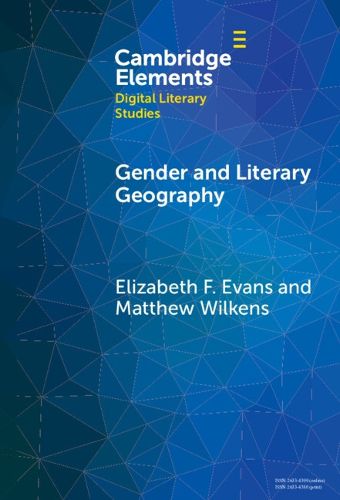Readings Newsletter
Become a Readings Member to make your shopping experience even easier.
Sign in or sign up for free!
You’re not far away from qualifying for FREE standard shipping within Australia
You’ve qualified for FREE standard shipping within Australia
The cart is loading…






Our analysis of over 20,000 books published in Britain between 1800 and 2009 compares the geographic attention of fiction authored by women and by men; of books that focus on women and men as characters; and of works published in different eras. We find that, while there were only modest differences in geographic attention in books by men and women authors, there were dramatic geographic differences in books with highly gendered character space. Counter to expectation, the geographic differences between differently gendered characters were remarkably stable across these centuries. We also examine and complicate the power attributed to separate-sphere ideology. And we demonstrate a surprising reversal of critical expectation: in fiction, broadly natural spaces were more strongly associated with men, while urban spaces were more aligned with women. As it uncovers spatial patterns in literary history, this study casts new light on well-known texts and reimagines literature's broader engagement with gender and geography.
$9.00 standard shipping within Australia
FREE standard shipping within Australia for orders over $100.00
Express & International shipping calculated at checkout
Stock availability can be subject to change without notice. We recommend calling the shop or contacting our online team to check availability of low stock items. Please see our Shopping Online page for more details.
Our analysis of over 20,000 books published in Britain between 1800 and 2009 compares the geographic attention of fiction authored by women and by men; of books that focus on women and men as characters; and of works published in different eras. We find that, while there were only modest differences in geographic attention in books by men and women authors, there were dramatic geographic differences in books with highly gendered character space. Counter to expectation, the geographic differences between differently gendered characters were remarkably stable across these centuries. We also examine and complicate the power attributed to separate-sphere ideology. And we demonstrate a surprising reversal of critical expectation: in fiction, broadly natural spaces were more strongly associated with men, while urban spaces were more aligned with women. As it uncovers spatial patterns in literary history, this study casts new light on well-known texts and reimagines literature's broader engagement with gender and geography.